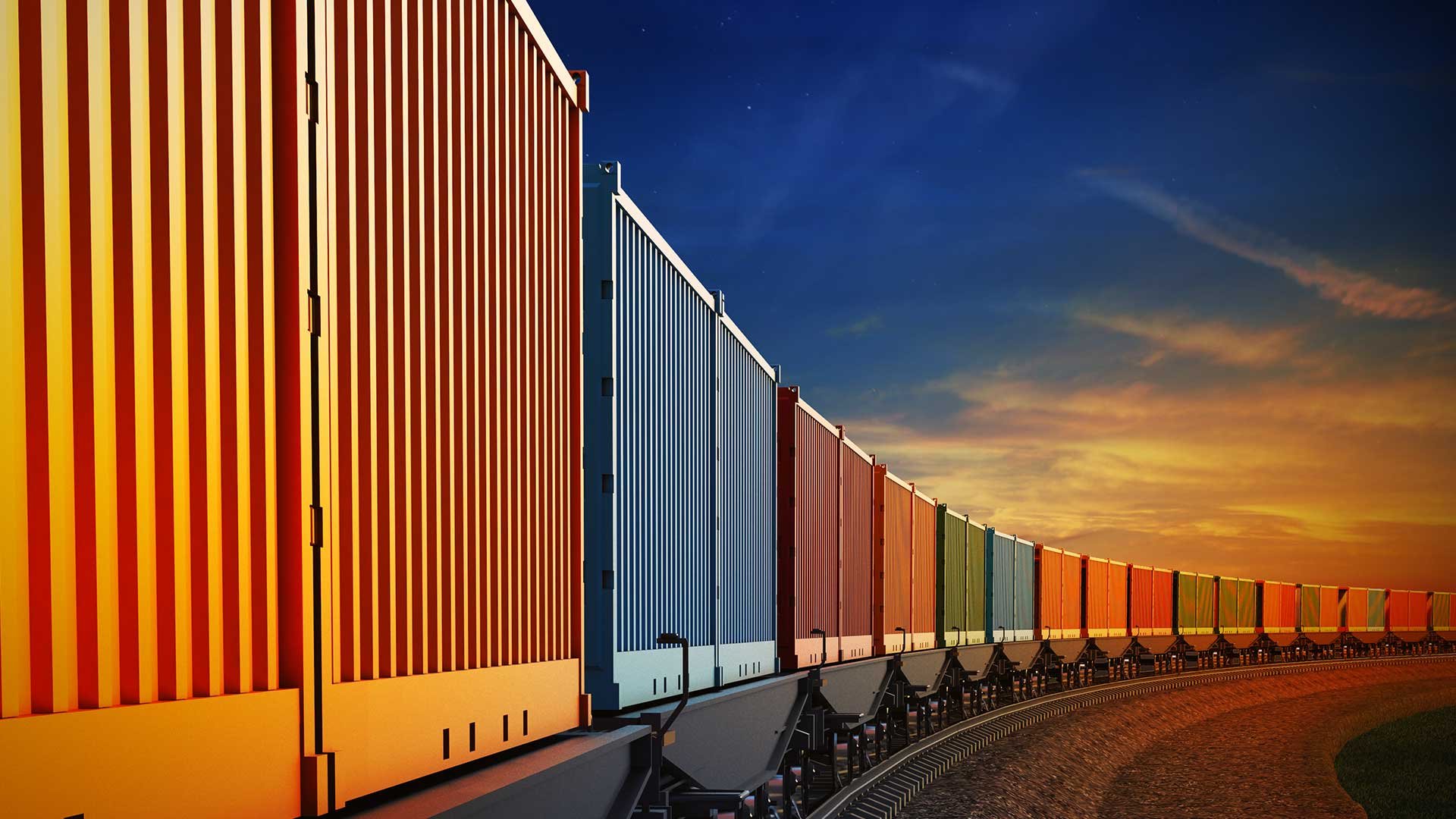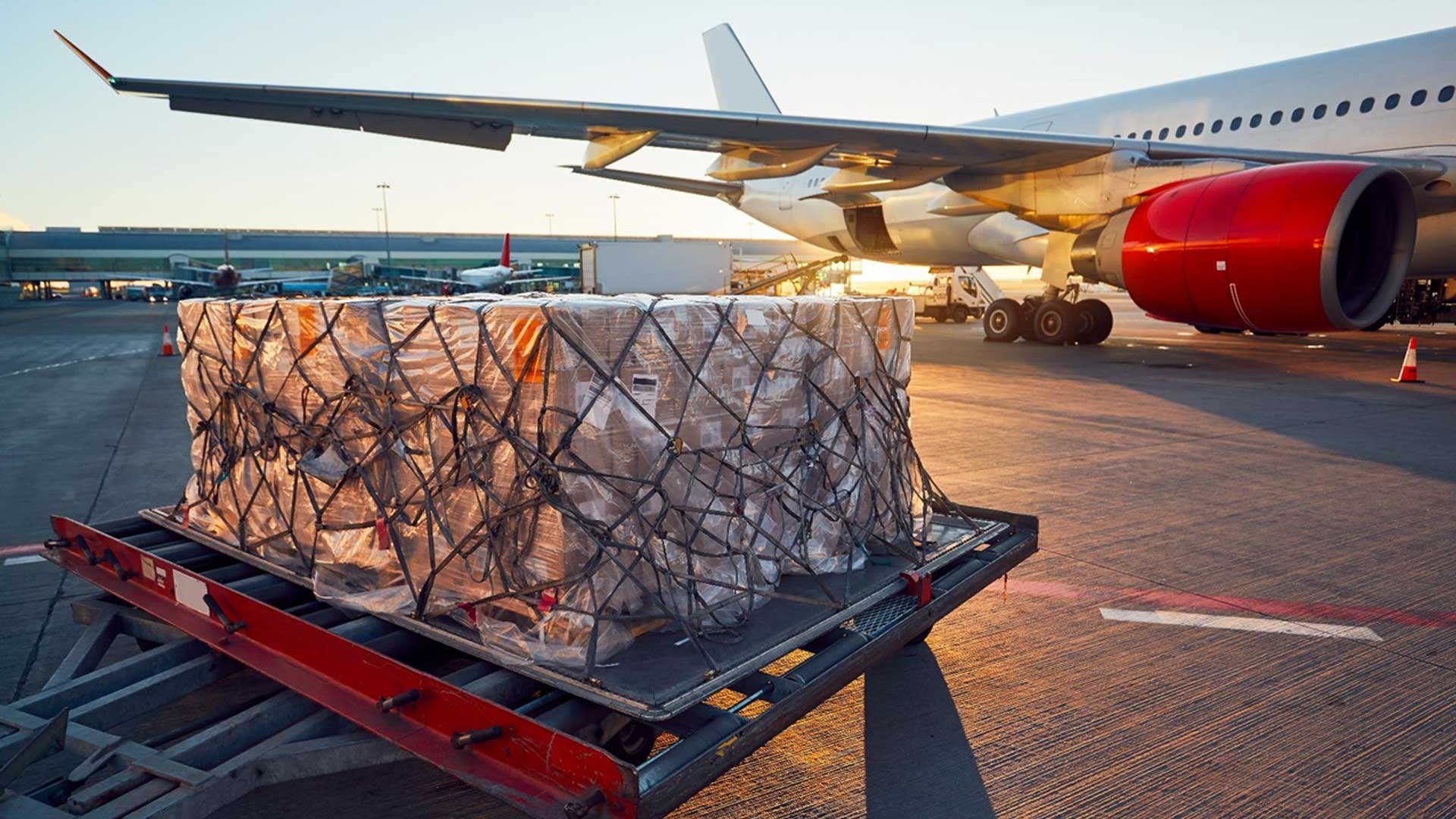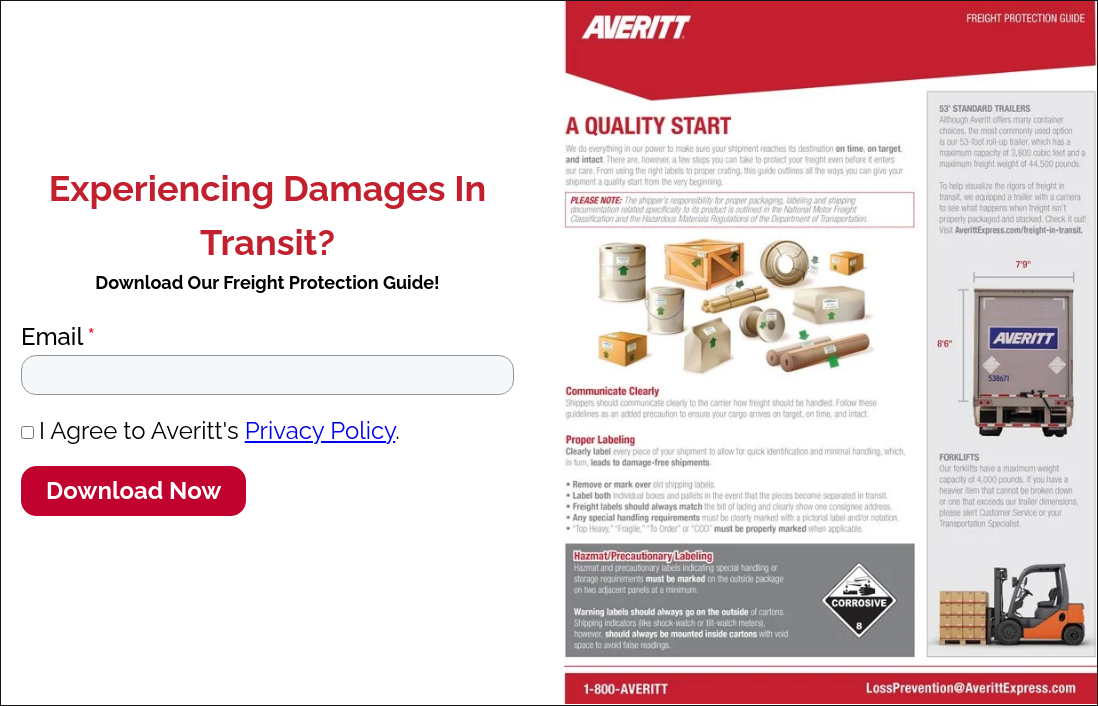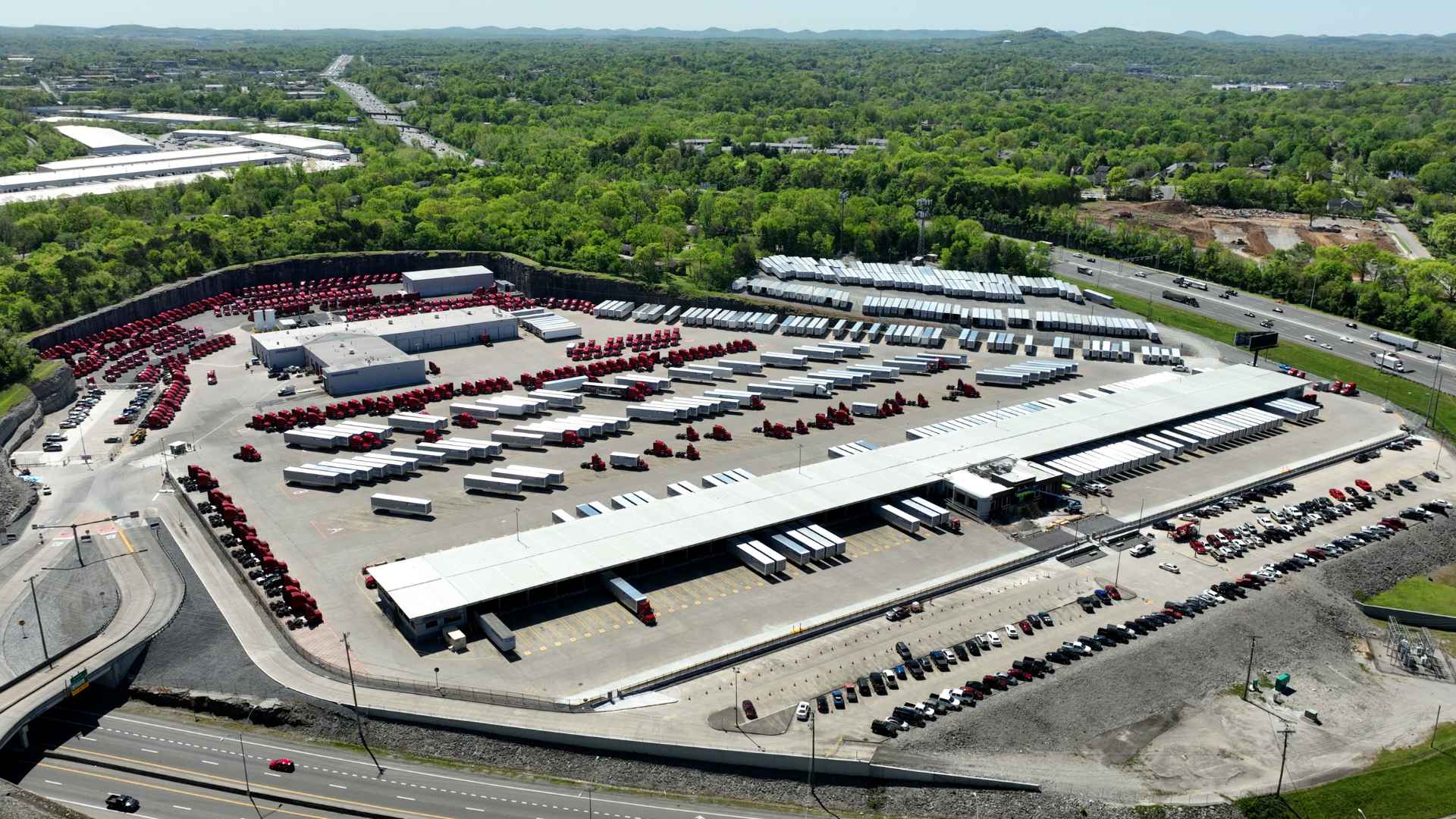Freight shipping is a fundamental element of global trade and the backbone of supply chains worldwide. It involves the movement of goods from manufacturers to markets, which is vital in keeping the wheels of commerce turning. Understanding the principles of freight movement is essential for businesses and individuals engaged in shipping or receiving goods.
This understanding not only enables them to navigate the complexities of the shipping industry but also ensures that their operations run smoothly. Whether it's verifying timely delivery, minimizing costs, or selecting the most efficient shipping method, knowledge of freight shipping practices is indispensable in today's interconnected economy.
What is Freight Shipping?
Freight shipping is the process of transporting commodities, goods, and cargo by land, sea, or air. It serves as a critical link in the global supply chain, ensuring that products reach their intended destinations efficiently. This form of shipping is adaptable to the diverse needs of shippers and can move anything from raw materials to finished products across continents and oceans.
There are several methods of shipping freight, each catering to different shipping needs based on the size of the shipment, its destination, and how quickly it needs to arrive.
The most common types include:

1.) Less Than Truckload (LTL)
This option is ideal for shipments that don't require the full space of a trailer. LTL service allows for the transportation of smaller freight loads by sharing trailer space with other shipments, making it a cost-effective choice for small to medium-sized businesses.

2.) Full Truckload (FTL)
FTL shipping is used when a shipment is large enough to fill an entire trailer or when a shipper prefers for their goods to be transported alone. This method is faster than LTL, as it involves direct delivery without making multiple stops to pick up or deliver other shipments.

3.) Intermodal
Intermodal shipping combines multiple modes of transportation, such as rail, truck, and sometimes ship, to move goods from the origin to the destination. Intermodal shipping is known for its efficiency and environmental benefits, as it can reduce fuel consumption and costs.
Understanding these freight options can help you select the most appropriate and cost-effective shipping method for your needs, assuring that your goods are transported safely and arrive on time.
Key Players in the Freight Shipping Industry
In the freight shipping industry, several key players work together to ensure that goods are transported efficiently and effectively. Understanding the roles and responsibilities of each entity can help you navigate the shipping process more smoothly.
1.) Shippers
These are individuals or companies that need to transport goods from one location to another. Shippers can range from large multinational corporations sending products worldwide to small business owners shipping locally.
2.) Carriers
Carriers are the companies that own or control the means of transportation. This includes trucking companies, rail operators, air freighters, and sea shipping lines. They are responsible for physically moving the goods from the shipper to the recipient.
3.) Freight Brokers
Freight brokers act as intermediaries between shippers and carriers. They help find the right carrier for a shipper’s needs, negotiate rates, and arrange the transportation details. Typically, brokers do not own any method of transportation – their role is to leverage their knowledge and network to help find shipping solutions.
4.) Logistics Companies
These companies offer comprehensive services that include not only arranging the transportation of goods but also managing the entire supply chain. This can involve warehousing, handling customs and documentation, and ensuring compliance with local and international shipping regulations. Logistics companies aim to optimize the shipping process, making it as efficient and cost-effective as possible.
Averitt has the distinction of offering virtually all of these services – with the exception of being the original shipper – under one roof. We coordinate the transport of goods through various modes, manage supply chain logistics, and offer specialized services tailored to specific shipping needs. This approach simplifies the shipping process for businesses, enabling them to depend on one source for all their freight transportation needs.
Learn more about Averitt by watching the short video below!
For over half a century, Averitt has been helping our customers succeed. We do it through a mix of passion, pride, and a powerful network of innovative transportation and logistics services. These services are spread across five main units that align with how shippers think and work. This not only streamlines. it creates a unified single-source offering that delivers a world of benefits all in one place. We call it the Power of One, and it's the key to our position as an industry leader. With Averitt, you have everything you need to plan, pack, move, manage, track, deliver, distribute, and more, all with just one contact, and zero worries... ...no matter what your transportation needs may be, and no matter how complicated the logistics. Averitt's talented and committed team of associates is here to get the job done right. Our LTL teams provide award-winning service throughout North America... ... from the first mile to the final mile and everything in between. Our truckload services include full load transportation, both over the road and on the rail, as well as production and event logistics, and more. Our dedicated group provides solutions ranging from pure dedicated fleets to flex-up integration with our network and over-the-road assets. Distribution and fulfillment provide customized drayage, transload, warehousing, e-commerce, and fulfillment solutions for customers of all sizes. And our Integrated and Global Solutions team delivers innovative solutions that tie everything together for a wealth of other customer needs, including international cross-border, intermodal, expedited, North America truckload brokerage, and more. But our comprehensive and growing list of services isn't all that sets us apart. Because at Averitt, our driving force is people. From our drivers, dock associates, and mechanics, to our twenty four seven customer service experts and sales teams, our focused and experienced associates are unified behind one common purpose - serving you. So whether you need to make a local move fast or are on a mission to get a shipment halfway around the world. There's only one name and one number that you need to know. Averitt, The Power of One
Freight Shipping Methods
The freight shipping industry offers a variety of methods to transport goods, each with its own set of advantages and considerations. Choosing the right method depends on factors such as cost, speed, capacity, and the nature of the goods being shipped. Each method has its own advantages and disadvantages, making certain options more suitable for specific needs. Here’s an overview of the primary shipping methods:
1.) Road
Shipping by truck is one of the most flexible and commonly used methods, ideal for door-to-door deliveries and short to medium distances. It offers a good balance between cost and speed, with the capacity to handle a wide range of cargo sizes, from small parcels to large containers. Road shipping is particularly suitable for perishable goods or items requiring quick delivery.
2.) Rail
Rail freight is an efficient option for transporting large volumes of goods over long distances. While it may not offer the flexibility of door-to-door delivery, it's more cost-effective for bulk shipments and less susceptible to traffic delays, making it a reliable choice for non-perishable goods. When shipping long distances by rail, shippers may have the ability to move their cargo within a container (container on flatcar) or in a standard trailer (trailer on flatcar).

3.) Air
Air cargo shipping is the fastest shipping method, ideal for time-sensitive or high-value goods. Although it comes with a higher cost, the speed of air shipping can be worth the investment for certain shipments. Capacity limitations and cost make it less suitable for very large or heavy cargo, but air freight offers both speed and efficiency for small, valuable, or perishable items.
4.) Ocean
Sea shipping is the most cost-effective method for transporting large volumes of goods internationally. It has the highest capacity and can handle massive quantities of cargo, including heavy and oversized items. However, sea cargo is also the slowest mode of transport, making it unsuitable for urgent shipments. It's ideal for goods that are not time-sensitive, such as raw materials and bulk commodities.
Did you know that Averitt's Integrated and Global Services offers shippers access to seamless international shipping services to and from over 100 countries around the world? Watch the short video to learn more!
In a world of endless choices, it can be easy to get turned around. But when it comes to your international supply chain, getting lost doesn't have to be a possibility. Because when you put your trust in Averitt International Solutions, you can always count on the fact that your business is in good hands. No matter where it's going, from distant shores, across the ocean on a vessel, to a faraway land on a plane, or on the ground by truck or rail, Averitt provides end to end pickup and delivery between more than a hundred countries with LCL and full load container services that stretch around the globe. Backed by around the clock customer support, customs brokers and a team of specialists dedicated to ensuring that your cargo reaches its destination with full online visibility throughout the entire journey. And when it comes to dependability, you can count on innovative solutions such as our revolutionary Asia Express services that will keep your supply chain moving like clockwork with weekly scheduled transpacific flights and sailings that are up to ten days faster than standard services. Whether it's Hebron to Hamburg, Shanghai to Shreveport, or Saskatoon to San Juan, You'll discover with our door to door solutions that international shipping doesn't have to be complex. From port logistics to customs clearance, warehousing and distribution throughout North America, we'll connect the links of your international supply chain all with the simplicity of just one contact and zero worries. That's the power of one.
Understanding differences between the most common modes of shipping can help businesses and individuals make informed decisions about which shipping method best aligns with their requirements – balancing cost, speed, and capacity to meet their logistical needs.
Understanding Freight Class and Pricing
Understanding the intricacies of freight class and pricing is essential for anyone shipping goods. These factors directly impact the cost of shipping and can influence decisions about the most efficient and cost-effective methods to transport goods.
1.) Freight Class
The concept of freight class is central to determining shipping costs in the LTL market. Freight class is determined by the National Motor Freight Traffic Association (NMFTA) and is based on the size, density, ease of handling, value, and liability of goods.
There are 18 different freight classes, ranging from 50 to 500. Generally, the higher the class, the higher the rate for shipping due to increased handling requirements or risks associated with transporting the goods. Understanding the correct LTL freight class for your shipment is crucial to avoid unexpected costs and delays.
2.) Distance
Unsurprisingly, the distance between the origin and destination impacts rates. Longer distances generally result in higher costs, but the rate per mile decreases as the distance increases. This means shipping across the country might not be as cost-prohibitive on a per-mile basis compared to shorter routes.
3.) Weight
The weight of the shipment also plays a significant role in determining shipping costs. Typically, the cost per hundred pounds decreases as the weight of the shipment increases – which means heavier shipments generally benefit from better shipping rates up to the capacity limits of the chosen shipping method.
4.) Special Handling Requirements
Goods that require special handling due to their fragility, hazardous nature, or need for refrigeration can incur additional costs. These requirements often necessitate specialized equipment or extra care during transport, increasing the overall cost of shipping.
The Freight Shipping Process
The freight shipping process involves several key steps, each critical to ensuring that goods arrive efficiently and safely at their destination. Understanding this process can help shippers manage their shipments more effectively and avoid common pitfalls.
Here's a breakdown of the typical freight shipping process:
1.) Scheduling a Pickup
The first step is to arrange for the carrier to pick up the shipment. This involves providing detailed information about the shipment, including its size, weight, and any special handling requirements. Accurate information helps ensure the pickup goes smoothly and the right resources are allocated.
2.) Packaging
Proper packaging is essential to protect the goods during transit. This might involve palletizing, shrink-wrapping, or using sturdy containers. The goal is to secure the cargo against movement and minimize the risk of damage.
3.) Documentation
Accurate and complete documentation is also crucial. The most important document is the Bill of Lading (BOL), which serves as a receipt for the goods and a contract between the shipper and the carrier. The BOL includes vital information such as the nature of the goods, quantity, destination, and terms of the shipment. For international shipments, additional documentation may be needed for customs clearance – including commercial invoices, certificates of origin, and packing lists.
4.) Customs Clearance
Shipments crossing international borders, including cross-border shipments with Mexico and Canada, are required to navigate customs. This involves ensuring that all documentation is in order and that any tariffs or duties are paid. Delays in customs clearance can lead to significant hold-ups, so it’s important to have all paperwork correctly filled out and submitted.
5.) Delivery
The final step is the delivery of the shipment to its destination. This might involve coordination with the recipient to ensure they’re prepared to receive the goods. The carrier will provide a Proof of Delivery (POD) document, which confirms that the shipment has arrived safely and has been accepted by the recipient.
Technology plays a crucial role in enhancing efficiency and visibility throughout the freight shipping process. Transportation Management Systems like Averitt Connect give shippers powerful tools for managing their shipments. This technology provides benefits like real-time tracking of shipments, which allows shippers to monitor their goods from pickup to delivery, and a simplified documentation process, which makes it easier to manage and submit the necessary paperwork. By leveraging such technology, shippers can streamline their operations, reduce the risk of errors, and ensure a smoother shipping experience.
Common Challenges in Freight Shipping
Navigating the complexities of freight shipping can present several challenges. However, understanding these obstacles and adopting best practices can significantly enhance the efficiency and security of the shipping process - and also help you reduce the impact of supply chain disruptions.
Here’s an overview of some common challenges in freight movement and strategies to address them:
1.) Damage to Goods
The risk of damage during transit is always a concern, especially for fragile or sensitive items. Improper handling, inadequate packaging, and accidents can all contribute to this issue.

2.) Delays
Shipping delays can occur due to a variety of reasons, including weather conditions, customs hold-ups, logistical errors, or carrier issues. These delays can disrupt supply chains and impact customer satisfaction.
3.) Cost Fluctuations
Shipping costs can vary due to fuel surcharges, demand, regulatory changes, and carrier capacity. These fluctuations can make budgeting and cost control challenging for shippers.
Best Practices for Efficient and Secure Freight Shipping
1.) Proper Packaging
Invest in quality packaging materials and techniques to protect your goods during transit. Use pallets, shrink wrap, and cushioning materials to minimize movement and prevent damage.
2.) Accurate Documentation
Ensure all shipping documents, including the Bill of Lading and any required customs paperwork, are accurately completed and submitted promptly. This reduces the risk of delays and ensures compliance with shipping regulations.
3.) Plan for Customs Clearance
For international shipments, familiarize yourself with the customs requirements of the destination country. Prepare and submit all necessary documentation in advance to minimize customs delays.
4.) Choose the Right Shipping Partners
Partner with reputable carriers and logistics providers with a proven track record of reliability and customer service. Consider their expertise in handling your specific type of goods and their ability to meet your shipping needs.
5.) Leverage Technology
Utilize technology solutions like Averitt Connect to gain visibility into your shipments, track their progress in real time, and manage documentation electronically. This can help you stay informed, make proactive decisions, and streamline the shipping process.
6.) Communicate Effectively
Maintain open lines of communication with your shipping partners and customers. Provide timely updates on shipment status and address any issues promptly to maintain trust and satisfaction.
7.) Adopt Flexible Shipping Strategies
Be prepared to adjust your shipping methods or routes in response to delays, cost fluctuations, or other unforeseen challenges. Flexibility can mitigate the impact of these issues and keep your supply chain moving.
By addressing these challenges, shippers can enhance their freight shipping operations' efficiency, security, and reliability.
Knowledge is Power
Understanding the basics of freight movement is crucial for efficiently managing your shipping or receiving operations. By grasping key concepts such as LTL freight classes, shipping methods, and the roles of different service providers in the transportation and logistics industry, you can navigate the complex world of freight with confidence. Applying this knowledge will not only streamline your shipping processes but also potentially reduce costs and improve overall satisfaction.
Whether you’re a seasoned shipping professional or new to the arena, continuously seeking knowledge and staying adaptable to changes in the industry are key to overcoming challenges and capitalizing on opportunities. Remember, effective freight shipping is not just about moving goods – it’s about moving your business forward.


.png?width=542&height=179&name=PNG-Averitt%2055%20Years%20RED%20ODFIP%20(1).png)










